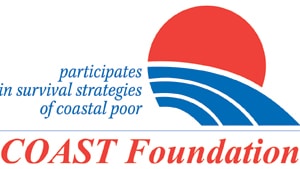September 1962, northern Iran. An earthquake strikes the area of Boein Zahra. More than 12,000 people die. Thousands of houses are destroyed. Cataclysmic for its victims, the tremor is also a baptism of fire for the World Food Programme: the institution has only existed for a matter of months. Even so, it quickly sends survivors 1,500 metric tons of wheat, 270 tons of sugar and 27 tons of tea.
Created in 1961 (at the behest of US President Dwight Eisenhower) as an experiment to provide food aid through the UN system, WFP is to be reassessed within three years. As crises multiply, the experiment proves its worth. A typhoon makes landfall in Thailand. Newly independent Algeria must repatriate and feed its war refugees. In every case, WFP rises to the task. Its mission is emergency aid, but also rehabilitation. A first development programme is launched in 1963 for Nubians in Sudan.
That same year, WFP’s first school meals project – in Togo – is approved. The principle of food aid as a central plank of emergency and development aid gains ground. In 1965, WFP is enshrined as a fully-fledged UN programme: it is to last for “as long as multilateral food aid is found feasible and desirable”.
Subsequent decades consolidate WFP’s role. Crises spill over the years, revealing hunger’s deadly prevalence, marking the conscience of humanity. But catastrophe spurs resourcefulness. The logistics of food aid are revolutionised. During the long famines which affect the western Sahel in the 1970s, WFP uses everything in its power – from car to camel, from road to river – to assist those in need. Thirty cargo aircraft, drawn from 12 national air forces, take to the airs. Ethiopia’s famine of 1984 further concentrates minds and means: WFP delivers 2 million tons of food. In 1989, Operation Lifeline Sudan is launched: leading a consortium of UN agencies and charities alongside UNICEF, WFP releases 1.5 million tons of food into the skies above was has since become South Sudan. The dawn-to-dusk, 20-aircraft, three-sorties-a-day airdrop remains, to this day, the largest in history. It saved hundreds of thousands of lives.
At the turn of the 1990s, regained freedom for many nations co-exists with hardship and fragmentation. Impoverishment forms a unifying backdrop to natural disasters, wars and the break-up of states. In WFP’s portfolio, the balance of development programmes versus emergency interventions shifts back and forth. The Rwandan genocide unfolds as Yugoslavia disintegrates. Again, WFP is there. In Kosovo in 1999, it establishes a network of mobile bakeries. As the decade closes, a global consensus takes hold that hunger cannot be fought in a void; that its underlying causes must be tackled. With the Kyoto Protocol, the world acknowledges the impact of a changing climate: a new conceptual umbrella takes shape for WFP’s longer-term aid projects. Perspectives deepen. Partnerships multiply. Non-governmental organizations consolidate their role in humanitarian and development assistance. WFP espouses this dynamic, increasingly forging alliances in an all-round effort to beat hunger.
The year 2000 brings the Millennium Development Goals, the first global blueprint for a world free from poverty, hunger and related ills. Under pressure to deliver measurable achievement, energies coalesce further. Many countries see governance standards improve, even as others grapple with conflict and insecurity. Extreme poverty recedes. The decade is not without its big humanitarian crises (the Asian tsunami of 2004 and the Haiti earthquake of 2010 both demand massive intervention), but WFP finds the space to pursue innovation. Amid intense renewal, both conceptual and technological, the agency’s mission evolves. Food aid gives way to food assistance, a more holistic, longer-lens approach to communities’ and societies’ nutritional needs. The provision of cash and vouchers emerges as an empowering complement to in-kind food distributions. The world’s first regular humanitarian air service,UNHAS is born. New, integrated monitoring systems allow WFP to assess food security landscapes with unprecedented accuracy. When emergencies strike, WFP handles frontline telecommunications and provides logistical support to all UN agencies and NGOs. Digital platforms are developed that greatly improve operational efficiency and – as seen in the Nepali earthquake of 2015 – offer those in need the ability to receive food within hours. The year before, the Ebola virus outbreak in West Africa had successfully tested the humanitarian community’s ability to act as one – in no small part, thanks to a Logistics Cluster managed by WFP. The “workable scheme to provide food aid” had grown into the world’s leading humanitarian organization.
Today, WFP is the world’s largest humanitarian agency saving lives and changing lives. When disasters strike, it is quick off the mark and scales up in a heartbeat; when they do not, it works tirelessly to bolster nutrition and food security. Its field presence is deep; its operational understanding of food needs, unrivalled.
In October 2020, the Norwegian Nobel Committee decided to award the Nobel Peace Prize to WFP “for its efforts to combat hunger, for its contribution to bettering conditions for peace in conflict-affected areas and for acting as a driving force in efforts to prevent the use of hunger as a weapon of war and conflict.”
The challenges remain stark: almost 700 million people are still hungry. And if the adoption of the 2030 Development Agenda is a cause for optimism, the persistence of conflict, in Syria and elsewhere, is one for sombre reflection. Even as it strives to assist the victims or war and want, WFP is working with national governments, civil society, other partners and sister agencies to preclude further suffering. Tomorrow can be brighter – but so should today. For the world and WFP alike, the promise of better times is tinged with a sobering urgency.


